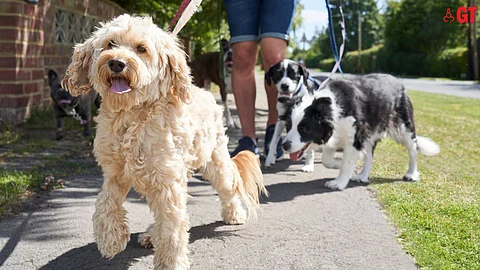

By Maya Rose Fernandes
Did you know that Indie dogs form the largest population of dogs across India, and Goa?
If, like me, you live in Goa, then you can’t escape the tensions that often crop up from time to time between Indie dogs and the people they are forced to share their space with. In general, they don’t live under direct human supervision and can be found around all types of human habitation.
Increased urbanization, poor population management measures and open garbage dumps have led to increased conflict between Indie dogs and humans. Although keeping dogs as pets has increased over the years, these are mostly commercially acquired or foreign breeds.
When I asked him what impact this has had on pet ownership, he said, “This tendency has run down the worth of the Indie dog, which is a far better fit, in every aspect, to our way of life. Indie dogs are far hardier and more resilient than breed dogs, have much more independent and diverse personalities, and are just as loyal, loving and beautiful.
Unfortunately, all too often, the news related to Indie dogs is of a negative vein with the phrase ‘stray dog menace’ being used indiscriminately in the media. We need the good news about them to get out there, too.”
The reason we were talking about this is because my friend had taken part in a recently published academic study by Mondal, Protopopova and Bhadra carried out by the Dog Lab at the Indian Institute of Science, Education and Research in Kolkata and the Animal Welfare Program at The University of British Columbia in Vancouver.
The study had surveyed over 1,500 people across India, including Goa, to take a close look at the human-animal bond and at-home behaviours of adopted Indie dogs. One of the intentions driving this study was to encourage the adoption of Indie dogs as a potential solution for both population management and better welfare.
Most of the owners surveyed reported feeling very close to their adopted Indie dogs.
I’m hoping more people will adopt Indie dogs, and stop buying breeds that are unsuitable for our weather conditions. I’m appalled to see Huskies and double-coated German Shepherds in the villages of Goa
Speaking to another friend who fostered and adopted Indie dogs, I asked her why she’d participated in the study. She replied, “I’m hoping more people will adopt Indie dogs, and stop buying breeds that are unsuitable for our weather conditions. I’m appalled to see Huskies and double-coated German Shepherds in the villages of Goa.
Many people – especially celebrities, have Indie dogs, and this has been having a trickle down effect. But in small towns and villages, including in Goa, it’s just the opposite. From having Indie dogs, people are moving to breeds.
The latest craze is Rottweilers and Cane Corsos. These two breeds can handle our weather well, but I’ve read that a Cane Corso has a bite force that’s more than a lion. My cab driver asked me why I have an Indie. He proudly told me that he’d bought his Rottweiler for 40,000 rupees!
Dogs have become an indicator of social status. This aspect is on the wane in cities, or in Bombay at least, due to the good work done by many animal NGOs. Many people – especially celebrities, have Indie dogs, and this has been having a trickle down effect. But in small towns and villages, including in Goa, it’s just the opposite. From having Indie dogs, people are moving to breeds.”
Though I love dogs, I’ve never taken time to understand the intricacies of their behaviour, and focused more on being annoyed by dog packs running amok at night, claiming territorial rights rather loudly.
These conversations brought about by glancing at this study were an eye-opener, helping me take a step closer to understanding the value of our local dogs and why adopting them is not only good for us as a society, but much better than buying a breed dog.
I hope that reading this column will change your mind, too.